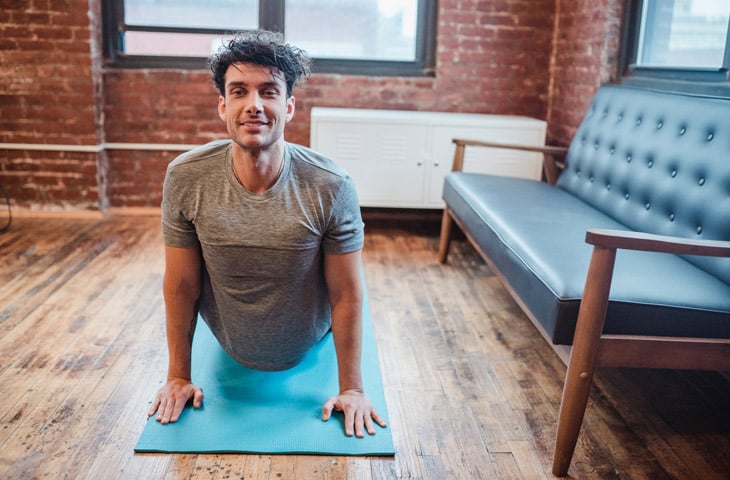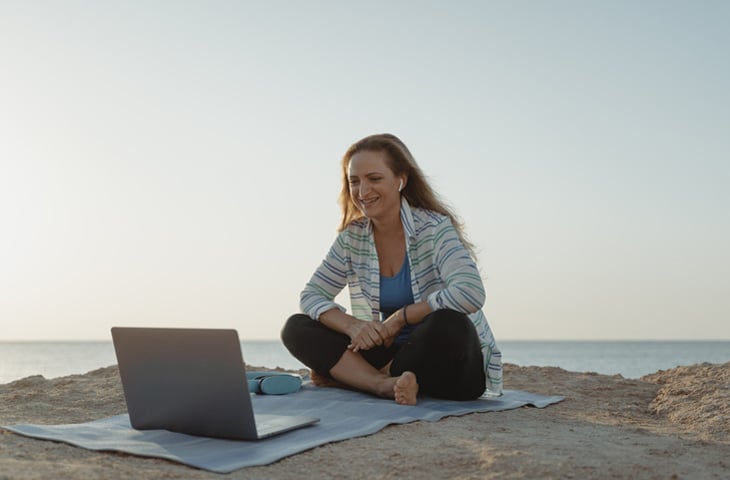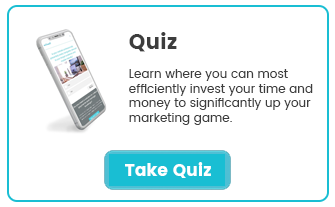How To Generate Online Passive Income For Your Wellness Business - with Rachel Lea Fishman
Even as we emerge out of the pandemic and begin teaching in the studio or in-person again, your digital library offers your wellness business an opportunity to earn online passive income.
It’s a rich resource hub where you can add extra value for your students and clients, create a community around, and passively sell.
To walk us through the steps, Rachel Lea Fishman joined Keri for a live Q&A session on how to generate passive income online for your wellness business.
About Rachel and Sutra
Rachel Lea is the Co-Founder of Sutra and a yoga instructor.
Rachel turned to yoga during college while battling knee injuries. Soon, she was immersed in the community and taking yoga twice a day.
All this time spent in the studio meant that Rachel experienced firsthand how much work yoga teachers put into everything they do, from the hour of sequencing before teaching, the programming, client connection, and the marketing.
At the same time, she saw instructors battling behind screens with outdated technology. And that’s when Sutra was born.
Sutra is a tool to help fitness instructors grow an online business. Instructors can host online and in-person classes, monetize on-demand content, offer retreats and courses, get website hosting, and more on the platform.
The platform is made by instructors for instructors, so Sutra knows what goes into the perfect sweat and is here to help.
Wonder What's Missing From Your Wellness Business' Marketing Strategy?
How To Generate Online Passive Income For Your Wellness Business
1. Figure Out What Passive Income Means For Your Business
Keri: For anyone who may not know, what is passive income?
Rachel: I’m sure you’ve seen those ads on Facebook and Instagram that want to show you how to create a million-dollar business and do no work.
And I wish that was the case, but it’s definitely not the case.
By definition, passive income is money you earn without time for money exchange.
A good example is if I am a private yoga instructor, and I charge $60 an hour for a private. The amount of money I make is tied to the number of hours I'm teaching, which is active income.
Now, say I were to take that private and make it into a video. It would take an hour to record that video, but I can sell three privates using that same video. I can now make three times as much revenue, not doing as much work, making a passive income.
So the main difference is time and money comparison.
2. Brainstorm Ideas To Generate A Passive Income

Keri: How can a teacher leverage this type of recurring revenue and start creating a passive income for their fitness business?
Rachel: Some of the most common passive income streams I'm seeing on the market right now are videos. You can't have enough videos. They're incredible.
Also, ebooks, courses and digital programming, affiliate marketing - every time your favorite influencer on Instagram says ‘buy something,’ they make a little money for that.
And then also merchandise: think physical goods.
What's really incredible about passive income is you create it once, and it scales. But of course, there's a lot of best practices around that.
3. Get Input From Your Clients
Rachel: To figure out what to sell, there are a few things to look at.
The first is, who's your customer? What do they like doing? What are they looking to purchase?
It's so easy to create a one-page ebook. But is that something that your customer really wants to consume?
Is it videos? Is it one-off classes? Is it courses?
The best thing you can do to get started is to survey your current customers. It's way easier to sell to your existing customers than create this incredible product, sell it on Facebook ads, and not even know if anyone wants it.
So I see surveys being really important.
You can do this on Instagram too. Make a poll and have your students be a part of the creation.
The cool thing about doing this is if your students are part of creating it, they’re probably going to buy it.

4. Pinpoint The Format You Want To Use
Rachel: The second thing I recommend doing is to figure out what the format will be.
Is that going to be a video versus a PDF? Or yoga versus nutrition in the industry?
What's the type of product? Is it going to be a course or a self-guided course? Or is it going to be cohort-based, meaning you all do it together?
5. Price It Right
Rachel: The final thing that I'd think about is price.
And do this before you build the product because it will help you figure out again that time is money. If it takes you two years to build, you’re not really scaling passive income unless you can make a ton of residuals.
Are you going to go for a really low price point that's accessible? Or are you going to go for a much higher price point because it's niche?
6. Weigh Up One-Time Payment vs Membership
Keri: That makes sense. Is there a trend you're seeing in pricing that’s working best? For example, should I use a subscription model membership or click per class?
Rachel: It all depends on what your business goals are.
The first thing I would say is, is this going to be a standalone product or an add-on product?

If it's an add-on, you want it to be at a low price point so that you can quickly add it to the other things you sell.
Say you do private training. Every time you train with a client, you can make a passive income by offering them your nutrition guide. The guide is $10, so it's a quick little sale that makes you passive income.
Now, if it's a standalone $10, you need to sell a lot of $10 things for it to make an impact on your income.
In terms of one-time versus recurring, it depends if you can create consistent value over time.
One-time products are great. You buy them, you get the whole thing, and that's what you get.
Memberships are incredible because it's money you can depend upon.
It's also a great way to grow. If people love it so much that they tell their friends about it, you can build a community around a membership.
What I will say about membership, if you're going to dive in, is that there is a commitment.
You have to consistently offer new value every single month to keep it going. You can't have a membership site with 20 videos, and never put in anything more.
You'll have to continue to create content, add videos, add PDFs, etc.
7. Seek Out Opportunity For Online Content, Even As In-Person Teaching Resumes

Keri: So let's say I have started teaching in person again. Should I still be making online content?
Rachel: It depends on what your goals are.
If recording videos doesn't excite you, don't do it. That's the obvious answer. But I would also say why not because you're teaching in person again after all?
If you're only teaching once or twice a week in the studio, people are going to want to see you more. Having a video library in your back pocket is a great way to funnel people in, make more money, and market yourself.
Also, in this day and age, everything is digital. People are sitting in. They're late to work. They're working out from home. It might be naive to think that everything's going to be in person.
So, having a digital component for yourself can be a solid win.
8. Create Space Online For Community
Keri: How do I create an online community of my own and foster that?
Rachel: One of the most common questions we hear as instructors hanging out before or after class is, what else do you teach? What else do you do? That felt so good in my body; I want to try that transition again.
So that's an opportunity when you're in-person to say, oh, you loved it, join my online community.

The way to create an online community is to find those people who think the same as you. Figure out what platforms they like to communicate on. Then find times when you not only have a synchronous chat, but you actually have live communication.
A lot of people think, okay, I built a Facebook group. Let me just set it and forget it, and everyone will chat on their own.
But it doesn’t happen that way. Everyone is busy. They don't have time to go check out the group and see what people say.
So if you can, organize a set schedule where you're getting everyone to come and hang out.
9. Don’t Be Afraid To Get Started
Keri: My last question is, let's say I'm a yoga teacher. I may do retreats here and there, but I don't have a great website. Do I need this great website and all this tech background to get started on Sutra?
Rachel: I hear it all the time: I'm technophobic; I'm allergic to technology.
And it's so funny because we use technology every day. This conversation is taking place over Facebook.
What's scary is running your own business, launching your product, and tying your name to that technology.
So the short answer is no. You don’t need a website to get started.
That's what we do and what we’re here for. If you don't have a website, we have landing pages.
Or, if you have a website with some cobwebs, we can help you polish it and put some technology inside so that you can sell on it.
We also build websites end to end, everything from concept to creation to launching the site.
So no matter what stage in your business you're at, we're here to help every step of the way. Whether you have one client or 10,000, we work with all shapes and sizes.
Final Thoughts
It’s a big thank you to Rachel for sharing her insights on how wellness professionals can earn a passive income online.
If you would like to get in touch with Rachel or Sutra, reach out on any of the following channels:
New resources, straight to your inbox
We’re committed to your privacy. WeTravel uses the information you provide to us to contact you about our relevant content, products, and services. You may unsubscribe at any time.





